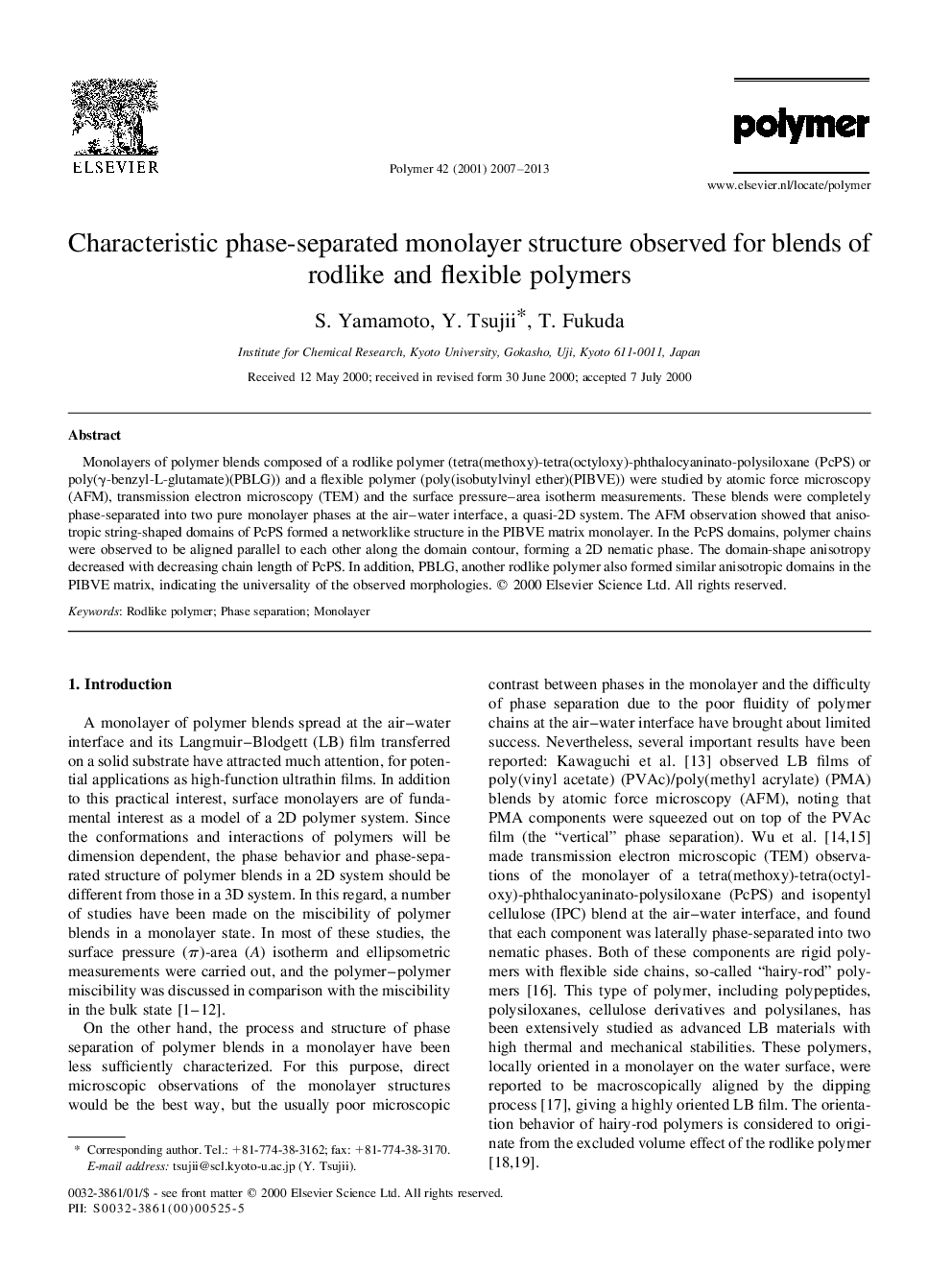| Article ID | Journal | Published Year | Pages | File Type |
|---|---|---|---|---|
| 5195299 | Polymer | 2013 | 7 Pages |
Abstract
Monolayers of polymer blends composed of a rodlike polymer (tetra(methoxy)-tetra(octyloxy)-phthalocyaninato-polysiloxane (PcPS) or poly(γ-benzyl-L-glutamate)(PBLG)) and a flexible polymer (poly(isobutylvinyl ether)(PIBVE)) were studied by atomic force microscopy (AFM), transmission electron microscopy (TEM) and the surface pressure-area isotherm measurements. These blends were completely phase-separated into two pure monolayer phases at the air-water interface, a quasi-2D system. The AFM observation showed that anisotropic string-shaped domains of PcPS formed a networklike structure in the PIBVE matrix monolayer. In the PcPS domains, polymer chains were observed to be aligned parallel to each other along the domain contour, forming a 2D nematic phase. The domain-shape anisotropy decreased with decreasing chain length of PcPS. In addition, PBLG, another rodlike polymer also formed similar anisotropic domains in the PIBVE matrix, indicating the universality of the observed morphologies.
Keywords
Related Topics
Physical Sciences and Engineering
Chemistry
Organic Chemistry
Authors
S. Yamamoto, Y. Tsujii, T. Fukuda,
